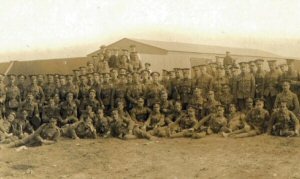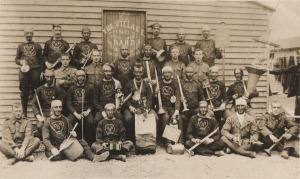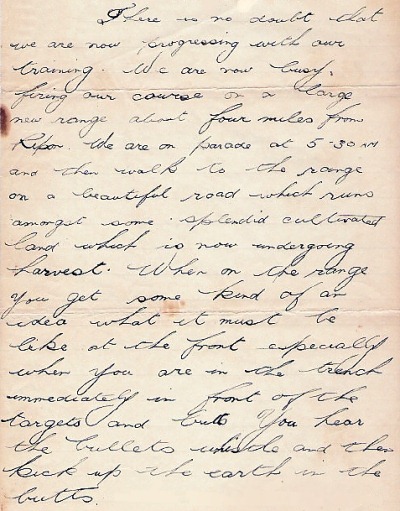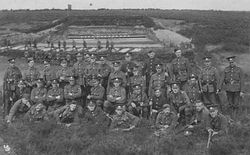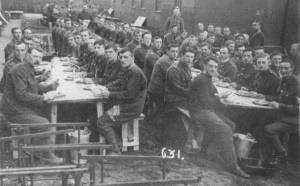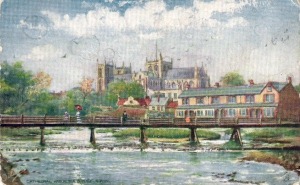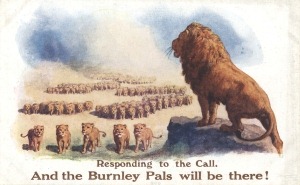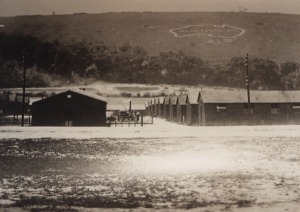|
Training: September 1914 to December 1915 As the 12th, 13th and 14th Battalions of the York & Lancaster Regiment1 joined the Accrington Pals at Penkridge to form 94th Infantry Brigade, mock battles and exercises on a brigade level began to form part of the training. If spirits needed lifting, there were inter-battalion football and cricket matches and, on 10th July, a Brigade Athletic Sports day. Penkridge also saw the formation of the 'Village Band', their unconventional instruments having been provided by Accrington's 'Lang Bridge's Band'. 17996 Pte. James Birch wrote: "On Monday, June 21st, some of our boys carried the instruments three miles from the station to the camp. The first night these merry 'Pals' marched up in fours, playing 'Bluebells of Scotland'. Soon all the men came out from their huts quite surprised, and also from the other lines, in fact, the officers all turned out with a smile on their faces, and contributed to the collection. On Wednesday the last batch left camp for their four days' leave home, and the Band turned out, formed up on the square, playing 'Bluebells of Scotland', 'Home, Sweet Home' and many other ditties, which sent the boys home with a cheerful smile upon their sunburnt faces."2
At the end of July, the battalion left Penkridge to make a recruiting march through its home towns in East Lancashire before moving into huts at Ripon South Camp. Two weeks after their arrival at Ripon, the Pals were the first to make use of the new rifle range near the village of Bishop Monkton.
After 4 days of welcome leave, the battalion moved on 24th September from Ripon to Hurdcott Camp3 near Salisbury where Major Edward Reiss took over as 2nd-in-command. As the Pals continued to take part in mock battles and route marches, the month of October was chiefly memorable for its terrible weather, though many were delighted to catch their first glimpse of aircraft in flight.
Above: postcards courtesy of Kit Harvey and John Garwood. The postcard of Ripon Cathedral was sent by 15173 Cpl. Richard Ormerod to his sister, Polly, on 23rd September 1915. The Pals spent the last two weeks of November at Larkhill Camp, an interlude that allowed exchange visits with the Accrington and Burnley Howitzers encamped a short distance away at Bulford.
After a fortnight on readiness to move at a moment's notice, the battalion finally received orders to embark. In the evening of 18th December, the Accrington Pals marched out of camp, destined neither for France nor Mesopotamia but for Egypt. Francis Macalpine, who served with the battalion throughout the war, later wrote: "The change which had taken place in each member of the battalion between August, 1914, and December, 1915, was perhaps scarcely realized at the time; but considering that the men had been drawn from the mine, factory or office, and the officers from business, college or profession, the discipline and the regard for regimental tradition were remarkable."5
© Andrew C Jackson 2004, 2006 Compiled from "The History of the East Lancashire Regiment in the Great War" edited by Major General Sir N. Nicholson, quoted sources, and with the kind help of John Garwood, Phil Guest, Kit Harvey, Peter Johnson and Gilbert Parkinson.
|
